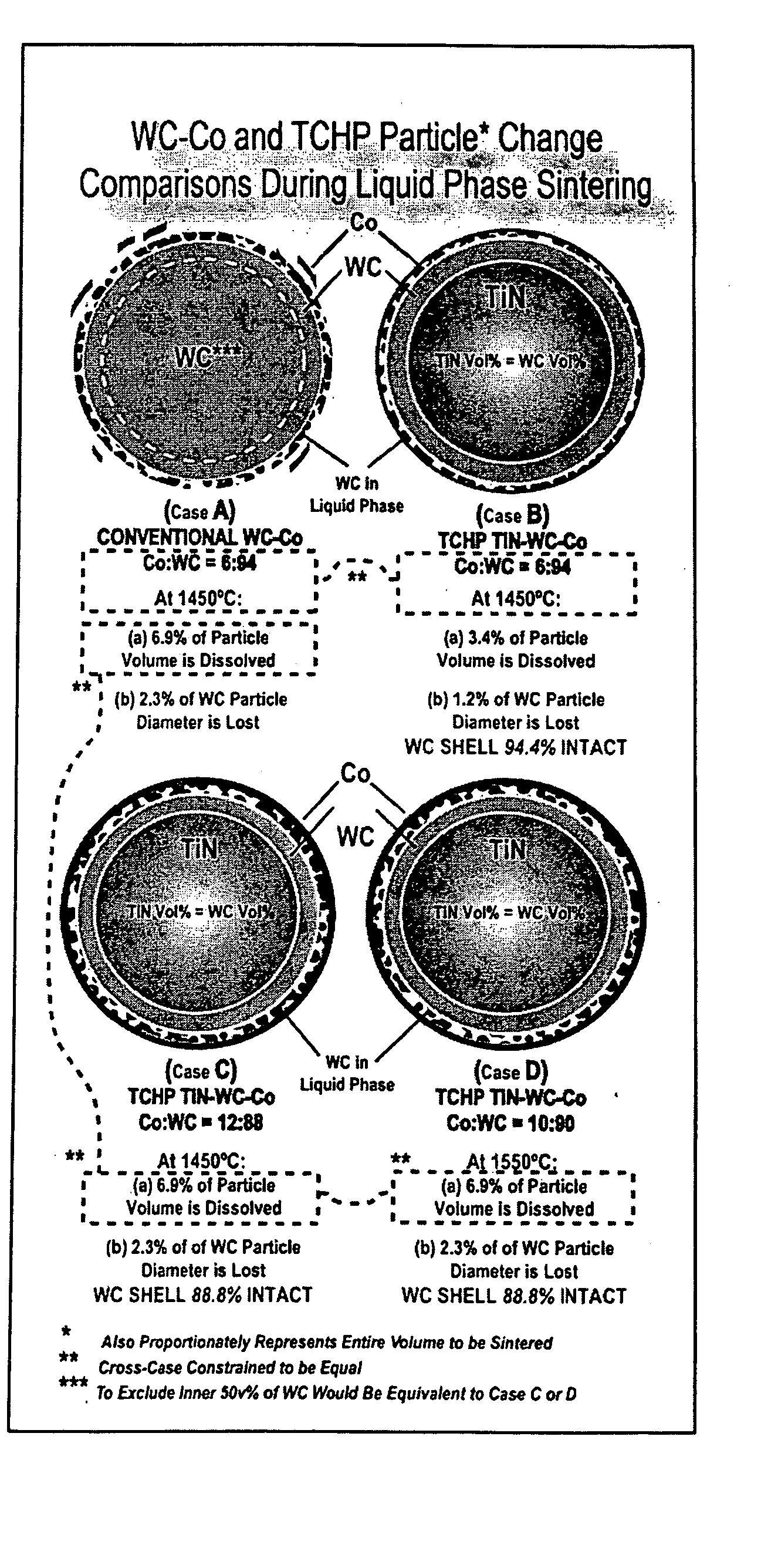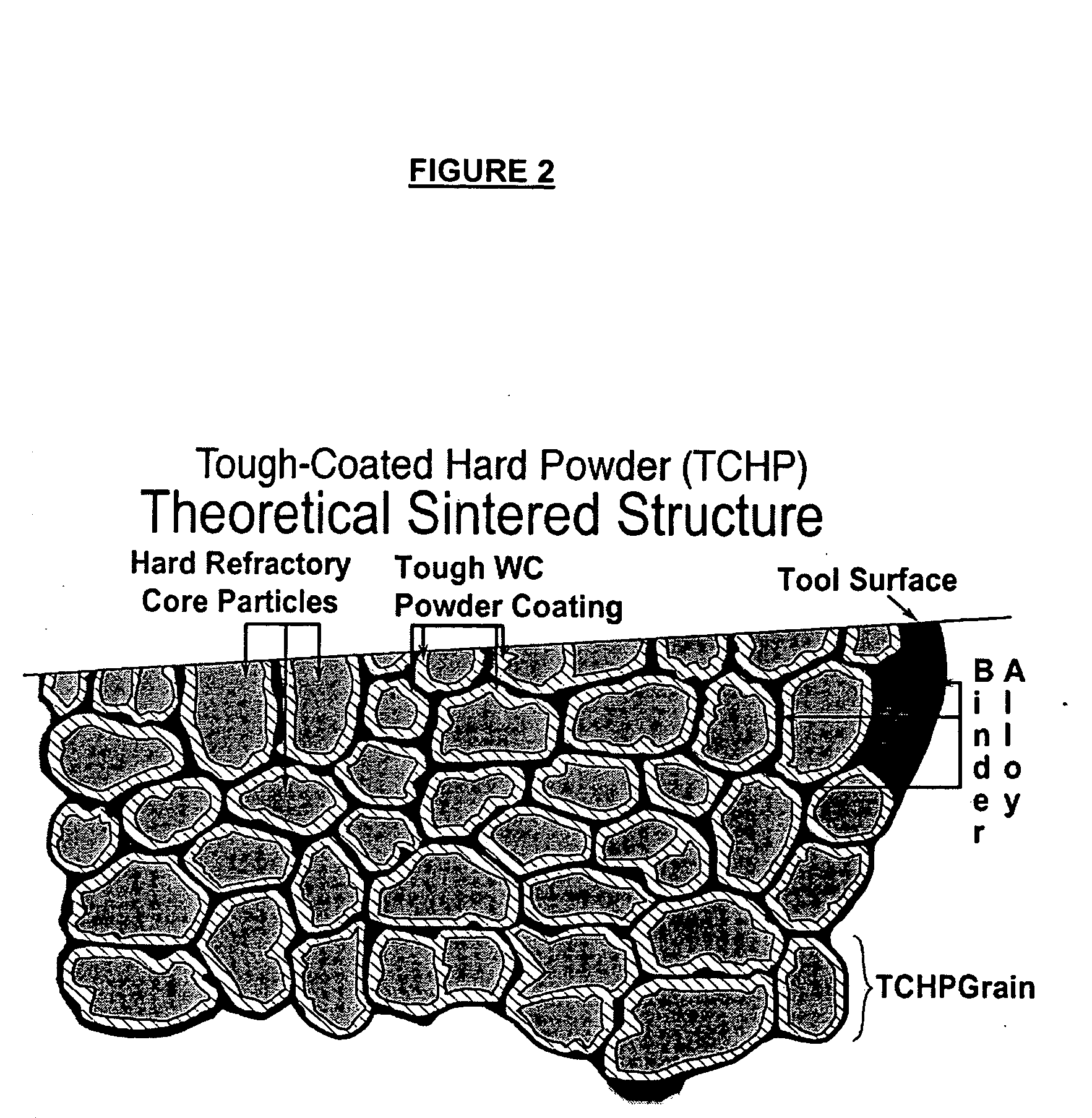Method for consolidating tough coated hard powders
a hard powder and hard coating technology, applied in the field of hard coating hard powder consolidation, can solve the problems of composite beginning to shrink, wc particles are arranged in different directions, and wc—co parts are often found with microstructural defects
- Summary
- Abstract
- Description
- Claims
- Application Information
AI Technical Summary
Benefits of technology
Problems solved by technology
Method used
Image
Examples
Embodiment Construction
[0043] The present disclosure describes methods of encapsulating and sintering fine particles having desired sets of properties with grain boundary modifiers having other properties, thus allowing for the design of previously impossible material-property combinations. The TCHP “building block” particle contains elements, such as hardness+wear resistance+toughness+binder metal+other designer properties, and gives the materials engineer thousands of new material grades with engineered properties simultaneously optimized at the nano-, micro-, macro- and functional levels.
[0044] This merging of nanoencapsulation with the sintering of fine particles creates pseudoalloy structures integrating thermodynamically incompatible material phases and properties. Such integration allows these phases and properties to operate, for example, at working surfaces and edges of tools, as complex components, and as thermally-applied coatings. Combination of multiple properties, such as, for example, low ...
PUM
| Property | Measurement | Unit |
|---|---|---|
| particle size | aaaaa | aaaaa |
| particle size | aaaaa | aaaaa |
| particle size | aaaaa | aaaaa |
Abstract
Description
Claims
Application Information
 Login to View More
Login to View More - R&D
- Intellectual Property
- Life Sciences
- Materials
- Tech Scout
- Unparalleled Data Quality
- Higher Quality Content
- 60% Fewer Hallucinations
Browse by: Latest US Patents, China's latest patents, Technical Efficacy Thesaurus, Application Domain, Technology Topic, Popular Technical Reports.
© 2025 PatSnap. All rights reserved.Legal|Privacy policy|Modern Slavery Act Transparency Statement|Sitemap|About US| Contact US: help@patsnap.com



